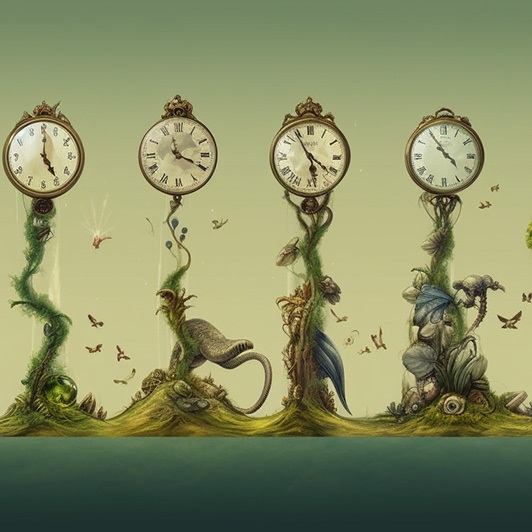
Researchers at European XFEL X-ray laser have reported creating an atomic clock with such a precise pulse generator that it has an accuracy of only 1 second lost in in 300 billion years!
How Atomic Clocks Work
Up until now, atomic clocks have been the world’s most accurate timekeepers by using electrons in the atomic shell of chemical elements, such as caesium, as the pulse generator define the time.
Electrons absorb microwaves at specific frequencies, elevating their energy levels. Atomic clocks use this principle, targeting caesium atoms with microwaves and adjusting the frequency to maximise absorption, known as ‘resonance.’ This resonance helps to stabilise the clock’s quartz oscillator, allowing caesium clocks to maintain accuracy within a second for 300 ‘million’ years (note, that’s not a mistake – the ‘billion’ accuracy is outlined later in this article). The narrower the resonance, the more precise the clock.
Who Uses Atomic Clocks, And Why?
The unparalleled precision, the size (at least server-rack size) and the expense (from thousands to millions of pounds) means that most of us won’t have one in the kitchen any time soon. Atomic clocks are actually used in a variety of sectors for a number of reasons (with accuracy being the main one), such as:
- In Global Navigation Satellite Systems (GNSS), e.g. GPS, GLONASS, and Galileo. These use atomic clocks on board their satellites to enable accurate positioning and navigation information to users worldwide.
- In Telecommunications networks to synchronise data transmissions, ensuring efficient and error-free data exchange.
- In scientific research (unsurprisingly). For example, physicists and other scientists use atomic clocks in experiments that require precise time measurements. They’re also crucial in testing fundamental principles of physics, like Einstein’s theory of relativity.
In astronomy, atomic clocks are used to provide the synchronisation for multiple observatories to coordinate observing the same astronomical object (known as VLBI or Very Long Baseline Interferometry).
Other ways that atomic clocks are used are for accurate time-stamping in financial market systems, in energy (power grid synchronisation), national timekeeping services, and in deep space exploration (to help with navigation accuracy in places where GPS signals aren’t accessible).
Strontium Clocks – Even More Accurate!
While caesium atomic clocks are highly accurate, strontium clocks are even more so, with an accuracy of one second in 15 billion years!
The Challenge
Although most of us would probably perfectly happy with such accurate clocks, scientists have long been frustrated by the fact that any improvement in accuracy is practically impossible to achieve with this method of electron excitation.
Nuclear Clocks
In what has been described as a “groundbreaking” experiment, and a “milestone” achievement, the European XFEL’s team focused on using the atomic nucleus (of scandium) rather than electrons, and the atomic shell to generate an accurate pulse. This is because nuclear resonances are much more acute than the resonances of electrons in the atomic shell (although harder to excite).
The researchers have reported using X-rays with an energy of 12.4 kiloelectronvolts (keV, about 10,000 times the energy of visible light) to achieve the necessary resonance. One major bonus of using scandium is that it’s readily available as a high-purity metal foil or as the compound scandium dioxide.
Using this method, the researchers have reported being able to make a clock with an accuracy of 1:10,000,000,000,000 possible, which corresponds to one second (lost) in 300 billion years!
Why Now?
Although the scientific potential of the scandium resonance has been known about for more than 30 years, as Anders Madsen, leading scientist at the MID experiment station at the European XFEL says: “Until now, however, no X-ray source was available that shone brightly enough within the narrow 1.4 feV line of scandium” and “That only changed with X-ray lasers like the European XFEL.”
Another important breakthrough by the scientists in this experiment has been the precise determination of the transition energy. As the head of the data analysis, Jörg Evers of the Max Planck Institute for Nuclear Physics in Heidelberg explains: “The exact knowledge of this energy is of enormous importance for the realisation of an atomic clock based on scandium.”
What Does This Mean For Your Business?
This breakthrough in finding a way to make even more accurate atomic clocks has value for many high-tech industries sectors, e.g. space global Navigation Satellite Systems (GNSS) telecoms networks, scientific research, financial market systems, deep space exploration, and more. It is these types of areas where improving accuracy (even by what could seem an unfathomably small amount), can make a real difference, and there will be rub-off benefits to humanity, economies, and other industries in the future. Also, a clock with this new even greater level of accuracy could help research in some exciting, truly futuristic areas such as enabling gravitational time dilation to be probed at sub-millimetre distances, thereby enabling studies that haven’t been accessible so far.
Clearly, it won’t be possible to verify if the claim about the accuracy of the new type of atomic clock is as accurate as predicted, and most of us will have to take the scientists’ word for it that this is a significant breakthrough, that could feed into other breakthroughs.




